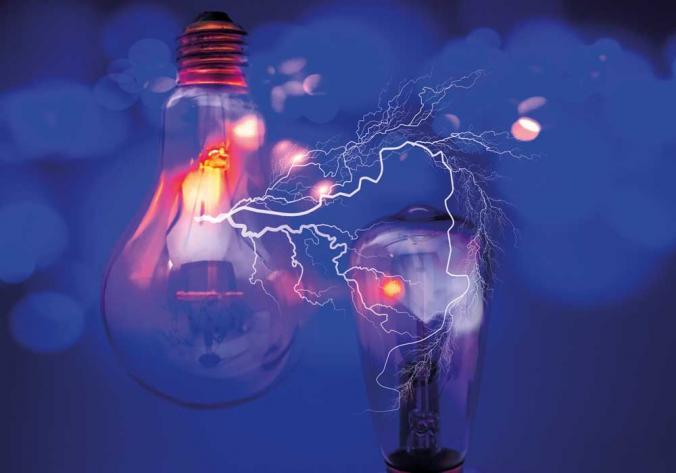Make gas detection a pillar of your ESG strategy
Robust environmental, social and governance (ESG) policies have become integral to day-to-day operations. Functioning as more than just a risk management exercise, ESG is not something that modern companies can afford to neglect. From investors using ESG strategies to evaluate potential investments to assuring the public that they are acting responsibly, companies that prioritise their ESG goals demonstrate that they care about their people and the planet and may also enjoy greater profits, as data shows that those with long-established ESG policies have outperformed their competitors.[1]
Understandably given the current international focus on sustainability, the environmental part of ESG policies can at times feel like it has received the lion's share of attention. With more sustainable business operations increasingly under the spotlight, controlling greenhouse gases and other harmful emissions represents an eye-catching way for companies to show that they are making a difference, and a wide range of technologies have been developed to help achieve these goals.
But it is important to remember that environmentalism is just one pillar of any effective ESG strategy. While requirements like workplace safety may not get the same attention in the media, they are just as important for demonstrating ESG credentials. Any company operating today needs measures in place for protecting their employees – and this starts with achieving a healthy working environment.
A breath of fresh air
Air pollution is one of those issues where it can be difficult to see the consequences until it is too late. Air quality is one of the leading causes of death worldwide and is linked to conditions like lung cancer and dementia. In the UK alone, up to 36,000 deaths are attributed to long-term exposure to air pollution each year.[2]
From industrial gases to harmful particles like black carbon, ammonia, nitrates, and sulphates, the list of pollutants that workers may be exposed to through accidental leaks is extensive. When such a leak occurs, the ensuing threat to wellbeing requires immediate action to prevent catastrophe.
Not only can leaks cause death or other long-term health conditions, businesses that are seen to be complacent in this area risk regulatory penalties and reputational damage. What's more, they may end up losing ground in a competitive market. Investors frequently use ESG compliance to evaluate potential investments, and companies that are seen as uncaring about the environment or employee health and wellbeing could become a PR disaster, and so represent a risky investment.
However, addressing this problem can be easier said than done. Gas leaks are by nature accidental, and many of these substances are colourless and odourless, rendering them impossible to detect without specialist equipment. Taking pollutants out of the air therefore requires companies to start improving their data.
Information is the key to identifying and addressing problems before they become a serious threat to employee health and wellbeing. Early detection can enable companies to address leaks before the threat becomes severe, informing preventative maintenance strategies, safeguarding employee health, and protecting a business's reputation. Actively monitoring for dangerous gases should therefore be the first step towards mitigating the risk that is posed.
Collecting this information requires companies to have access to intelligent sensing technology. Without these systems in place, businesses lack the data they need to inform their ESG policies, preventing them from effectively protecting their people.
The case here is clear: in today's workplace, gas detection systems are no longer just 'nice to have'. This technology is essential for protecting employee health and should form a core part of any worthwhile ESG strategy.
Making the right choice of equipment
Thankfully, modern sensor technology means industry professionals have access to a broader range of gas detection systems than ever. These technologies, once limited to specialist applications, are becoming increasingly affordable and accessible, and are bringing connected gas detection to a wide range of sectors.
This range of choices means that when selecting a gas detector, organisations must consider what is right for their business. Fixed detectors may be more appropriate in environments where the threat from gas is serious and ongoing. In more fast-paced industries, personal or handheld devices may be more appropriate, enabling staff to identify dangerous gas concentrations during spot checks. However, these must be balanced against the fact that they rely on individuals using them correctly at the required time, risking introducing human error into the process.
Another avenue for gas detection is presented by laser absorption spectroscopy. Offering high sensitivity, reliability, and fast response times, laser-based sensing is becoming increasingly popular for gas detection and analysis applications.
This popularity is due to the unique properties of infrared (IR) light for gas detection applications. IR wavelengths are particularly well suited for gas detection and analysis due to how they interact with gas samples. Different gases have different absorption profiles, meaning that they absorb wavelengths of light in varying amounts. This information can be used to create a unique chemical fingerprint enabling gases to be identified. Many gases are particularly absorbent to IR wavelengths, making it easy to create detection devices that can identify gas with a sensitivity that extends to parts per billion.
In laser absorption spectroscopy, an IR laser beam is passed through gas samples before reaching a sensor that converts the light into electrical signals. Monitoring the changes between the laser beam and the light that reaches the sensor can help to demonstrate the presence of a particular gas. These systems are also capable of continually monitoring for combustible gases and vapours within the lower explosive limit and provide alarm indications where necessary.
Investing in systems like these can provide the pillar that a solid ESG strategy is built around. By enabling companies to quickly and accurately determine where leaks are occurring, preventative action can be taken that reduces the risk to staff and the environment alike.
Focus for the future
The focus on ESG compliance is not going away any time soon. To remain competitive, companies must actively demonstrate their commitment to wellbeing and the environment, by taking action to reduce their impact on the planet and protecting their people. These ESG programmes must be authentic and achievable, reflecting companies' own market positions, and be supported with a workplace culture that ensures safety is treated as a priority.
Training and education are essential in ensuring workers can identify potential hazards and begin the process of addressing them. Staff must be coached and supported by a management team that genuinely cares about safety and is committed to ensuring gas detection data is collected and acted upon. Crucially, these cultures must be supported by state-of-the-art gas detection systems that make data accessible and enable appropriate precautionary actions. With a combined approach to air quality such as this, it is easier than ever to get on the path to delivering excellence in ESG.
Text: Mark Naples, General Manager, Umicore Coating Services Images: stockphoto









